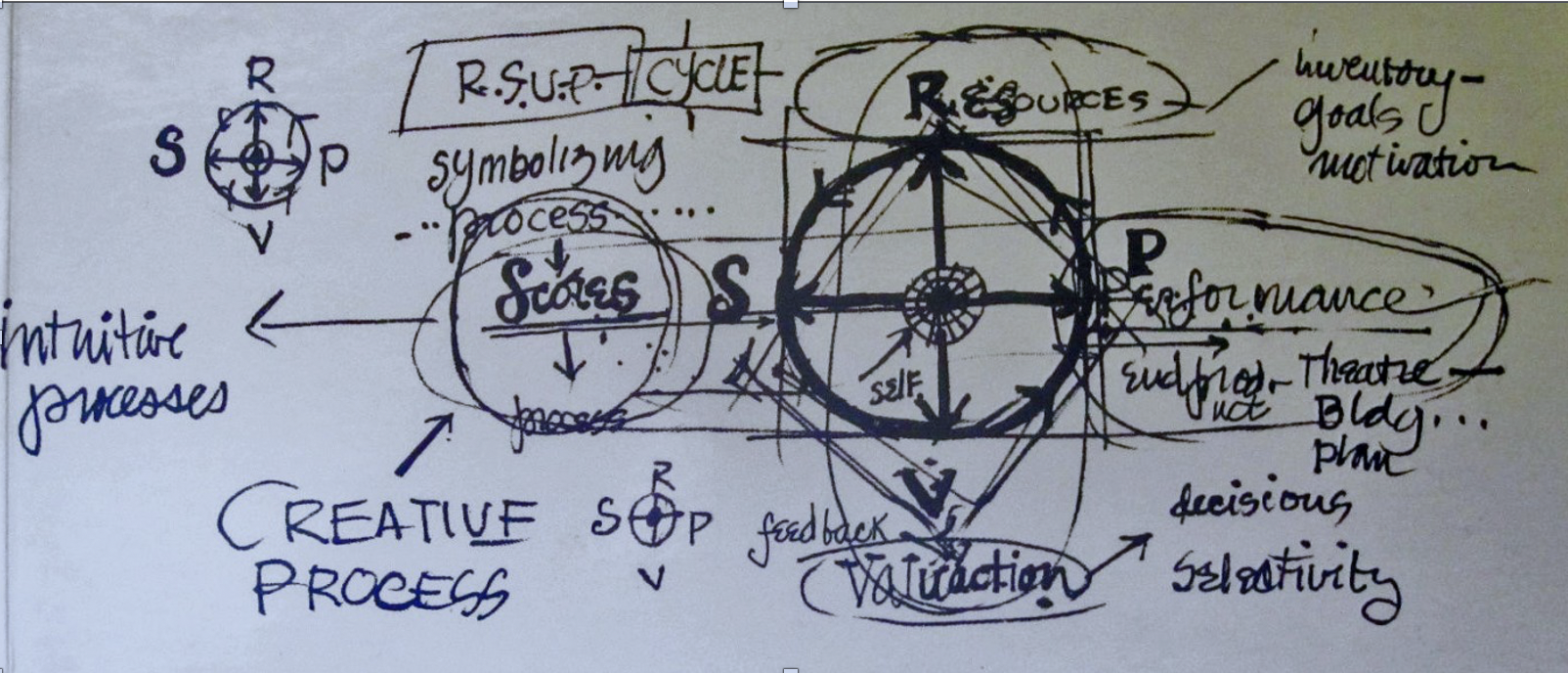RSVP Cycles
The RSVP Cycles are a creative paradigm that organizes and
makes clear ways for individuals to collaborate in groups.
The paradigm emphasizes ongoingness and process rather than sequence and goal fulfillment; it is participatory and cyclical instead of hierarchical and sequential. It emphasizes humans as actors rather than as machines, tools, or passive consumers of goods.
One step does not necessarily lead to the next as a result. Instead, access to the cycle can happen at any time and affect how change and growth occur.
Our idea of creativity in groups is predicated on the idea that people have the capacity for creativity and that this capacity may be unlocked and strengthened when they engage in groups. The freedom to act is not restricted, as it normally is when each facet is in action since it is not obstructed by the other three.
An RSVP process framework is used. It gives many individuals a method to collaborate in groups productively rather than haphazardly and to be conscious of the process while they are engaged in it. As a result, the process can go forward and action may be taken. It is cyclical, so rather than rejecting input or change from any individual if it doesn't fit, it embraces it.
The initialism of the name stands for these four components:
R - Resources, which are what you have to work with. These include human and physical resources and their motivation and aims.
S - Scores which describe the process leading to the performance.
V - Valuaction which analyzes the results of action and possible selectivity and decisions. The term “valuaction is one coined to suggest the action-oriented as well as the decision-oriented aspects of V in the cycle.
P - Performance, which is the resultant of scores and is the “style” of the process.
![]()
The paradigm emphasizes ongoingness and process rather than sequence and goal fulfillment; it is participatory and cyclical instead of hierarchical and sequential. It emphasizes humans as actors rather than as machines, tools, or passive consumers of goods.
One step does not necessarily lead to the next as a result. Instead, access to the cycle can happen at any time and affect how change and growth occur.
Our idea of creativity in groups is predicated on the idea that people have the capacity for creativity and that this capacity may be unlocked and strengthened when they engage in groups. The freedom to act is not restricted, as it normally is when each facet is in action since it is not obstructed by the other three.
An RSVP process framework is used. It gives many individuals a method to collaborate in groups productively rather than haphazardly and to be conscious of the process while they are engaged in it. As a result, the process can go forward and action may be taken. It is cyclical, so rather than rejecting input or change from any individual if it doesn't fit, it embraces it.
The initialism of the name stands for these four components:
R - Resources, which are what you have to work with. These include human and physical resources and their motivation and aims.
S - Scores which describe the process leading to the performance.
V - Valuaction which analyzes the results of action and possible selectivity and decisions. The term “valuaction is one coined to suggest the action-oriented as well as the decision-oriented aspects of V in the cycle.
P - Performance, which is the resultant of scores and is the “style” of the process.

︎︎︎from RSVP cycles creative method for collaboration was developed by Lawrence Halprin and Anna Halprin.






